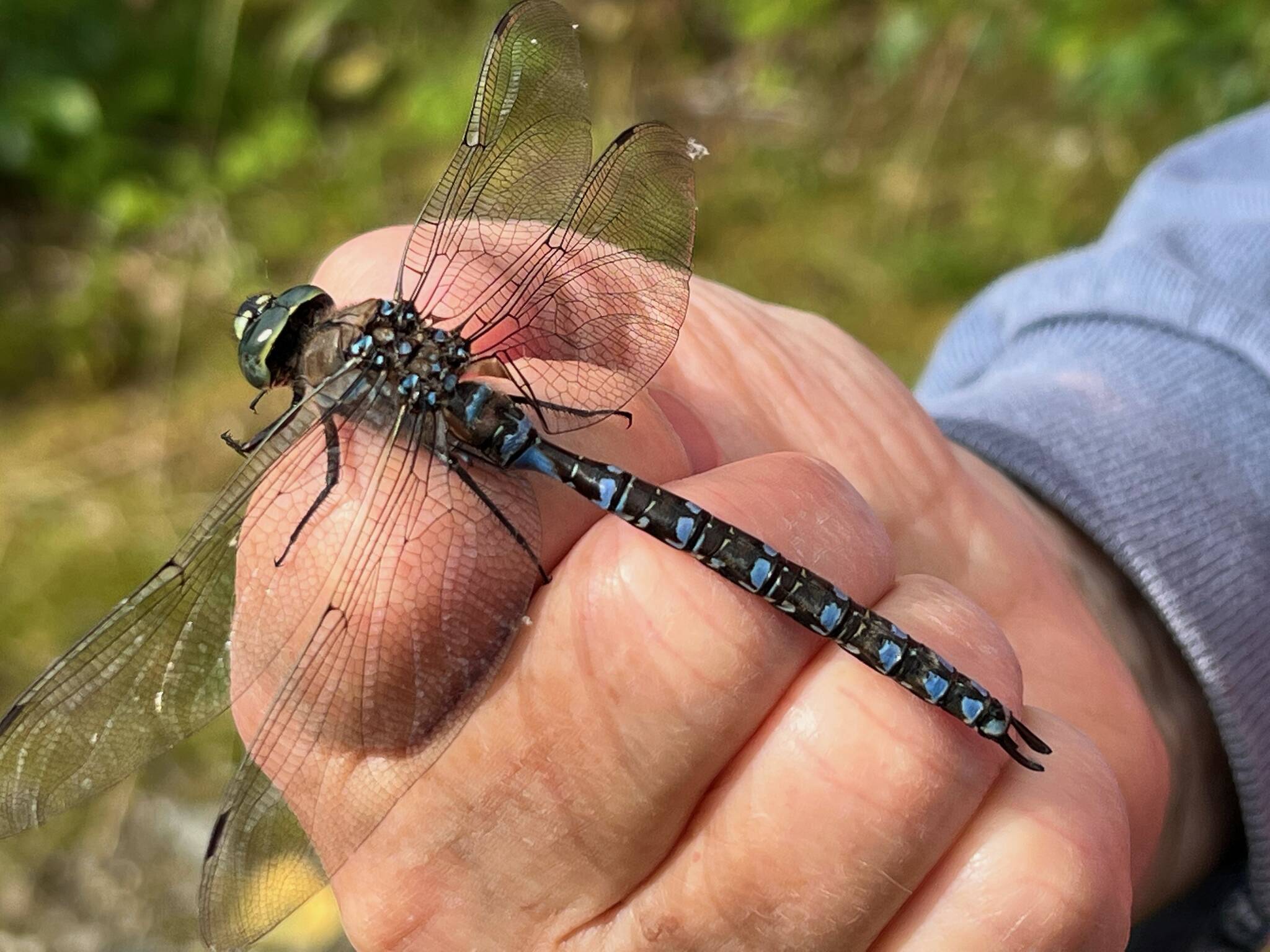Good news from Kingfisher Pond: the male Common Yellowthroat that has been singing and hanging out in the low vegetation apparently got a mate! Because this species is uncommon here (although not in some other regions, hence its English name), I had wondered if a female would show up, and there was evidence that one did so. In mid-July, he was seen carrying loads of captured bugs, presumably to juveniles lurking somewhere nearby.
Revisiting Kingfisher Pond in early August, I found well-grown broods of ducks and a male red-winged blackbird who was still singing and frequently giving his warning whistles. So I guessed that he had some fledglings somewhere in the sedges.
On the West Glacier Trail I saw some agitated fluttering down on the packed dirt. I stooped to look more closely and saw a cluster of small, brown moths(?) having a serious tussle. Aha—one of them was a female, just a bit bigger and paler than the others. Two males were fighting to have-at her, wrestling and twisting and flapping so vigorously that that whole group skittered across the ground. Two other males were flitting about, hoping to join the fracas. The action went on for several minutes, and finally one guy won. She then wandered off with him, backward and upside down, still attached to her by the tip of his abdomen.
As I was bent over, hands on knees, watching that little show, other trail walkers passed by, giving me a wide berth. One kind soul inquired if I was OK and, being told that I was watching something, quickly departed. Not one passer-by asked what I found to be so interesting. Hmmm.
[Wild Shots: Photos of Mother Nature in Alaska]
Above the tram on lower Gold Ridge on a foggy day, we found the frog orchids blooming. When we started back down the trail, a huge porcupine shuffled aside to let us pass and then moved a foot or two more into denser vegetation. Clearly it was not much worried by our presence and just wanted to have its lunch undisturbed.
On the Horse Tram Trail, toadlets from the big Amalga diaspora were still crossing the lower part of the trail in early August. I even found an extremely small one (less than 1 cm long) at the top of the hill, far from where most of the dispersers were observed. It was accompanied by a grown-up toad about two inches long, an unusual association and presumably temporary.
Along that trail, some of the bunchberries had been chewed — something had left deep divots in the fruit, exposing what remained of the white interior. Slugs are the suspected perpetrators. But one day I found a little green caterpillar chewing on the red outer skin of the fruit, so there could be more than one nibbler involved.
That observation made me think about larger consumers of bunchberries: What about vertebrates? The fruits are edible (if not especially tasty), and many kinds of vertebrates in other places are known to eat the berries. The list of vertebrate consumers is long, including grouse, thrushes, vireos and sparrows, as well as black bears, marten, rabbits and hares and rodents. Most of these critters would digest the fruit pulp and disperse the two small seeds inside each fruit. But what happens here? Some of the consumers on that list live here, but somehow, so far, I haven’t seen evidence of much vertebrate activity on bunchberry.
In early August, near Crystal Lake in the Mendenhall Valley, I was checking out the status of high-bush cranberry crops, which were just starting to ripen. Along came a German couple, exploring some Juneau trails on the multi-year adventure of sailing all over the world. They asked what I was doing, which led to a long chat on various topics. As we talked, a big dragonfly known as a blue darner came in, appearing to be very interested in us. It stayed with us for a long time, perched on our caps, our shoulders, our hands, and seemed quite happy to have its photo taken at close range. We all had fun with him, but I still wonder what he thought he was doing!
Meanwhile, back at the ranch, I’ve been enjoying the numerous chickadees that throng the seed feeder over the pond — when the big blue bullies aren’t hogging it. A few juncos are here too, including some portly juveniles from midsummer broods.
• Mary F. Willson is a retired professor of ecology. “On the Trails” appears every Wednesday in the Juneau Empire.

